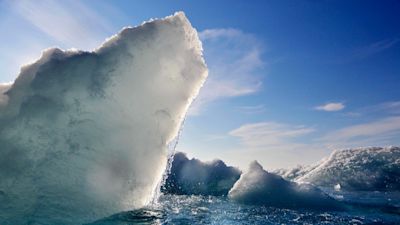Arctic Ocean being polluted by tiny microplastics from our clothes, study finds

The Arctic Ocean is being "pervasively" polluted by microplastics and fibres that are released after we wash our clothes, a major study has found.
A team of scientists led by research group Ocean Wise based in Canada analysed samples from 71 locations across the European and North American Arctic, including the North Pole using a variety of vessels that traveled over 11,000 miles.
From their analysis, researchers calculated the average concentration of microplastics to be around 40 microplastic particles per cubic metre despite it being one of the most remote regions on earth.
Researchers fear the high amount of microplastics could be lethal to the abundant amount of fish that lives in the region.
The artic region covered stretched from Norway to the Canadian Arctic and went as south as the US-Canada border.
Synthetic fibres were the dominant types of plastic found in their research, which usually comes from clothing.
Most clothing is made from synthetic fibres like polyester that does not degrade easily.
When these clothes are washed tiny pieces of plastic, that are no bigger than 5mm, break off the main body and escape into our water supply.
It is now clear much of this is making its way up to the Arctic Ocean.
"The Arctic Ocean, while distant to many of us, has long provided` food and a way of life for Inuit communities” said Dr. Peter Ross, lead author of the study which was published in the Nature Communication journal on Tuesday.
He said: "The study again underscores the vulnerability of the Arctic to environmental change and to pollutants transported from the south."
Dr Ross said he hoped the study would be helpful for policymakers when trying to tackle the problem of microplastics.
While the issue of plastic polluting the Earth's environment has become a prominent issue in many nations in recent years the impact of microplastics is far less understood.
Studies into microplastics have found they are appearing in large numbers all across the world, as well as inside the stomachs of humans and other animals.
Microplastics have been found at the bottom of the Mariana Trench at the top of Mount Everest.
The study found concentrations of microplastics were three times higher in the Eastern Arctic which is above Western Europe and the Atlantic than they were over North America and the Pacific.
The authors of the study said this was not surprising as more water flows from the Atlantic to the Arctic than it does from the Pacific.The arctic is often viewed by scientists as a measure of the planet's health due to its highly sensitive nature where a few small changes can result in massive shifts, the region is considered extremely vulnerable to climate change.